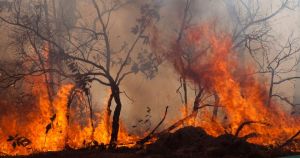Spring is a great time to be outdoors and exploring your local bush reserves. Spring is also the time of year that a lot of our native plants are flowering especially those plant species growing on the sandstone outcrops found in the Hills Shire. A great place to discover these plants is the O’Hara’s Creek walk, which is part of the Bushwalks in the Hills Guided bushwalks program https://www.thehills.nsw.gov.au/Venues/Parks-Recreation/Tracks-Trails. The Shire is home to a great diversity of plants and animals. Find out more about your local biodiversity.
Biodiversity
The Hills Shire supports 81 known threatened species, populations or habitats, including eight endangered ecological communities and four critically endangered listed in the Biodiversity Conservation Act 2016 (NSW) – the Sydney Turpentine Ironbark Forest, Blue Gum High Forest, Cumberland Plain Woodland and Shale Sandstone Transition Forest.
Vegetation communities
The character or features of the bush in the Hills Shire changes as you move through the landscape. These changes are a response to the underlying soil and rock, the location in the landscape such as a hillside or valley floor (sheltered or open), the aspect (north or south facing), the slope of the land, microclimates and altered fire regimes.
The result is certain groups of plants tend to occur together. These particular groupings or associations are known as vegetation or plant communities. The communities do not have distinct or hard boundaries but grade into one another. A common plant community found in the valley areas in the Hills Shire is the Sydney Sandstone Gully Forest.
Once you have undertaken a few walks in the local bush you will notice these groupings and begin to recognise these communities. A good plant identification booklet will assist you identify the species that occur within a community.





